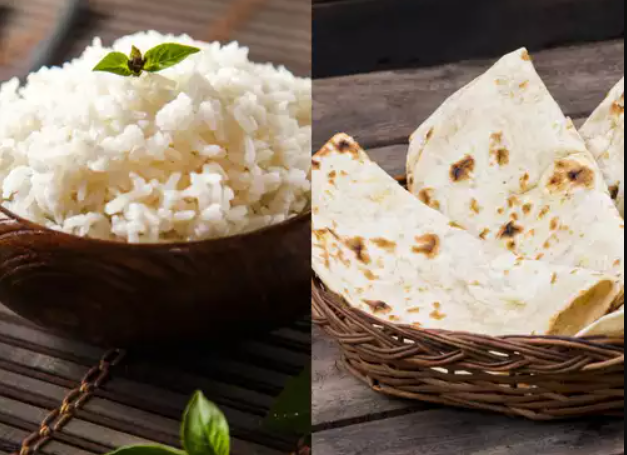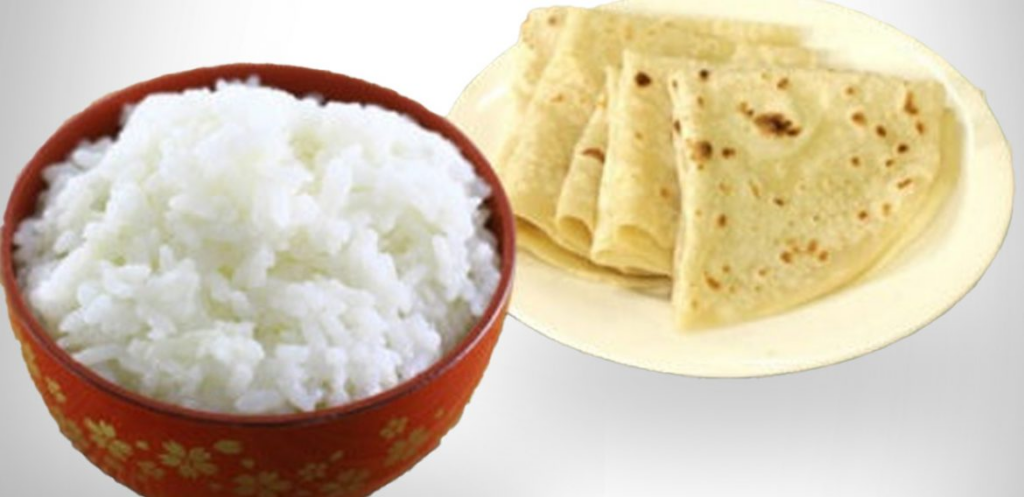
Is Roti a healthier alternative to rice? Examine What Pros Have to Say 2023
Sanjh
- 0
Roti and rice are the staple foods throughout the majority of India. Without them, our meal would be incomplete. As both are cereals, their nutritional values are nearly identical, and they both provide us with energy.
When someone embarks on a diet to lose weight, the first foods they cease eating are roti and rice, two dietary staples that are excellent sources of energy. South Indians will assert that rice is the healthier option, while North Indians will argue that roti is the healthier option.
But which one is healthier, or do they have the same amount of calories? To answer this question, ABP Live consulted experts who provided us with a clear understanding of when to choose roti or rice and under what circumstances.

Calorific Value Of Roti And Rice
Clinical Dietitian Garima Goyal stated, “When comparing the calorific value of these two foods, one roti and 30 grams of uncooked rice have the same amount of calories, but you will feel satiated after consuming a roti due to its high fiber content.
Additionally, the higher protein content of wheat compared to rice results in a sense of satiety after consuming chapati. Rice, on the other hand, is deficient in both fiber and protein and will make you hungry shortly after consumption. This suggests that even though the two foods have the same number of calories, their macronutrient composition depends on the source of those calories.”

Content in Carbohydrates of Roti and Rice
Regarding the carbohydrate content of roti and rice, it is said that roti contains complex carbohydrates while rice contains basic carbohydrates.
According to Vaishali Marathe, chief dietician at Medicover Hospitals in Navi Mumbai, roti is prepared from whole wheat, jowar, or bajra and contains fewer carbohydrates than rice. Because it contains fiber, it falls under the category of complex carbohydrates, whereas rice falls under the category of simple carbohydrates.
The difference between the two is that simple carbohydrates are ingested quickly and, because they lack fiber, are quickly converted into glucose, whereas complex carbohydrates are digested slowly and contain fiber, which promotes satiety.
She also discussed the nutritional value of roti made from whole wheat, stating that one serving of 30 grams (1 chapati) contains 100 calories, 21 grams of carbohydrates, 2.5 grams of protein, 0.5 grams of fat, 3.4 grams of fiber, and various minerals such as sodium, magnesium, and zinc.
She added, when discussing the nutritional value of rice, that 1 serving = 30g (1 dish of cooked rice) = 100 calories and contains 21g carbohydrates, 1.5 g protein, 0.5 g fat, and 0g fiber.
It is evident from these values that both roti and rice contain the same quantity of carbohydrates and lipids, but differ in protein and fiber content.

Kalpana Gupta, a Clinical Nutritionist, Nutrition & Dietetics at Max Smart Super Speciality Hospital, Saket, remarked, “As a nutritionist, I would recommend that both be consumed in the appropriate amounts.”
Index Glycemic Of Roti And Rice
Glycemic Index is the degree to which carbohydrate-rich diets cause a rise in blood sugar levels.
Dietician Garima stated, “Chapati made from wheat flour has a lesser glycemic index of 62 compared to white rice, which has a glycemic index of 73, and brown rice, which has a glycemic index of 68. Additionally, the flour composition of chapati can vary.
The GI of besan or chickpea flour-made roti is the lowest at 52. This does not preclude the consumption of rice. You may consume them in moderation, and brown rice is preferable because it is less refined and contains more fiber, vitamins, and minerals.”
Also, eating a roti does not imply forgetting about portion size. Two medium-sized rotis are sufficient for a supper if you are trying to lose weight. Vaishali Marathe added, “However, if you are diabetic and you still want to eat rice, a small bowl mixed with vegetables/ soya chunks/ paneer can be eaten as it increases the nutritional value and decreases the glycemic load.”
Comparative Benefits Analysis of Whole Wheat Roti and Rice
Kalpana Gupta drew up a comparative analysis of the advantages of roti and rice, stating that whole wheat roti has a high fibre content, so it keeps our stomach full for a longer period of time, which may aid in weight loss and is also beneficial for those with constipation, whereas rice, which is easy to digest and low in fibre, can be consumed by those with loose stools.
Additionally, she stated that rice is preferable for gluten-sensitive individuals and those with celiac disease because whole wheat chapatis contain gluten.


